Immerse yourself in Santiago de Compostela's vibrant flavors and uncover hidden culinary gems with our expert insider guides. Plan an unforgettable trip today!
Read more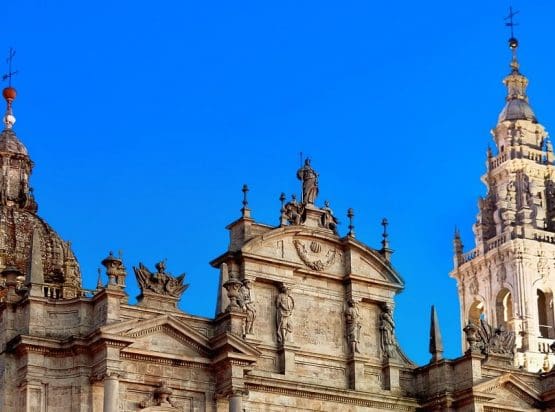
EXPLORE ALL OUR GALICIA WINE REGIONS GUIDE
Last updated: October 11, 2024
The delicious white wines of Galicia are no longer an insider’s secret. On the contrary – Rias Baixas and Valdeorras have become international superstars, winning the hearts and minds of sommeliers and consumers across the globe. Indeed, there is scarcely a wine list in London, Sydney, Hong Kong, or New York that does not offer at least one or two labels from northwestern Spain. To marginalize Galicia is to commit commercial suicide.
Yet the region still has a few surprises up its sleeve. Monterrei is one prime example; this up-and-coming DO is a hot topic in 2023, not least due to its warmer macroclimate, exceptional soils, and significant diurnal temperature variation. Unlike the much larger Rias Baixas, Monterrei produces red and white wines, cultivating a broad palate of grape varieties, including Mencia, Trousseau, and Godello. The critics are already calling Monterrei “the next big thing.” They could be right.
Discover more about Spanish Wine
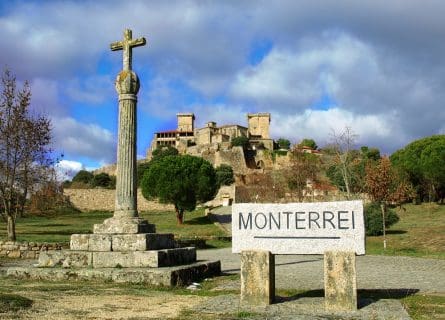
It is a historical irony that this nascent region (by contemporary standards) has been growing vines since antiquity. Indeed, advanced civilizations made wine in Galicia long before the Romans conquered the Iberian Peninsula in the 1st century BC. The Greeks, Carthaginians, and Phoenicians can all claim to be part of Galicia’s ancient wine culture. At the same time, the region’s Celtic traditions have survived throughout the ages despite the endless wars and political turbulence of the past two millennia.
Yet, Galicia knew peace for a time as the emperor Octavian consolidated Roman control over this damp and verdant corner of Spain. This stability and prosperity endured until the 5th century when anarchy reigned as competing tribes fought over the spoils of the rapidly disintegrating Western Roman Empire. By the end of the 5th century, a sophisticated tribe known as the Suebi had decided to settle in northwestern Spain, establishing the Kingdom of Galicia.
However, the long-haired Visigoths (fierce rivals of the Suebi) had made a pact with a deposed Roman emperor; they agreed to empty the Iberian Peninsula of other invaders in return for territories in southern France. Unfortunately, the Franks also had designs on Gaul’s rich lands, so the Visigoths were pushed south into Spain. They established a short-lived capital in Toledo, where about 200,000 individuals attempted to rule over a vast and highly diverse landscape. By 700, the Visigothic kingdom was falling apart, with famine in Toledo and chaos throughout the peninsula. This presented an irresistible opportunity for the Moorish general Tariq, who landed a force of 10,000 men in Gibraltar in 711.
Galicia During the Moorish Expansion and Reconquest
The Moors swept through the peninsula with amazing ease. However, Galicia remained out of their reach – historians assume they lost their appetite for conquering this inclement and inhospitable land. As a result, Galicia became part of the kingdom of Castilla y Leon during the Christian reconquest of Spain in the Middle Ages. Many Muslim people who fled from areas that fell to the Christians in the 13th century went to Granada or North Africa. Yet by 1492, Hispania was completely under the control of the Catholic Monarchs.
This was Galicia’s golden age, as viticulture assumed a role of great cultural and economic importance. The church played a vital part in this renaissance; Benedictine and Cistercian monks had relocated to Galicia after discovering the supposed final resting place of St James de Compostela. They assumed responsibility for wine growing across Western Europe, while Spain grew affluent from the gold and silver taken from the New World.
The 18th and 19th centuries marked an epoch of decline and stagnation as Spain lost its colonies and poured vast wealth into futile wars with its European neighbors. Meanwhile, the phylloxera louse devastated the vineyards of Galicia in the late 1800s. This pernicious pest, inadvertently imported from the US, nearly saw off Spain’s once thriving wine industry. Thankfully, experts found a lasting solution to the crisis by regrafting vines onto American rootstock in the early 1900s, as American plants had developed an inbuilt resistance to the disease.
A century later, Monterrei is in rude health. In 1994, the region’s winegrowers restored its status as a DO after demonstrating a marked improvement in winemaking quality and viticultural methods. Today, critics and sommeliers are determined to put Monterrei on the global map.
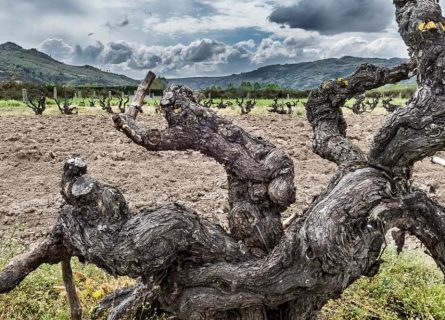
Monterrei is a world apart from the rain-soaked vineyards of Galicia’s coastal regions. Indeed, red and white varieties achieve full physiological ripeness in most vintages—something that cannot be said for Rias Baixas! This is due to the warmer continental climate of the interior and the proximity of the Sierra de Larouca mountain range, which acts as a rain shadow when the Atlantic deposits a great deal of moisture into the atmosphere. As a result, autumn in Monterrei can be pleasantly temperate and sunny, while other parts of northwestern Spain ‘enjoy’ a deluge of biblical proportions in mid-October.
Vineyards and Terroir
The vineyards are located in the southeastern corner of Galicia, on the border with Portugal. The hub of winegrowing activity takes place on the banks of the Tamega River, a tributary that flows into the Duoro. The DO is divided into two key subregions: Ledeira de Monterrei and Val de Monterrei. The region’s soils are very diverse, ranging from metamorphic slate to granite and colder clay.
However, the most important feature of the local terroir is site elevation and the concomitant diurnal temperature variation. In certain higher-altitude climats, growers will encounter a decline of up to 30 degrees centigrade at night – the secret behind Monterrei’s crisp whites and bright, floral red wines.
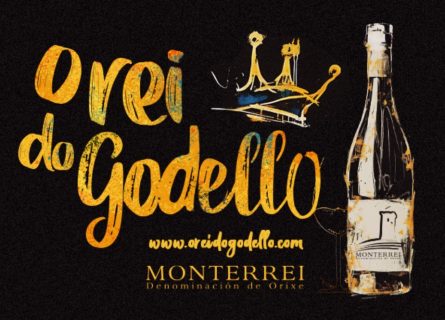
This is the modern miracle of Galician wine. Monterrei, a formerly ignored and backwater province, now produces various styles in a relatively compact geographical area. A benign climate, considerable investment, and a tradition of growing red varieties like Mencia made it all possible. Thus, the DO regulates the production of red and white wines, stipulating the permitted varieties in the blend and length of maturation.
Regulations and Styles of Monterrei Blanco
By law, Monterrei Blanco must contain at least 60 percent Godello, Treixadura, and/or Doña Blanca; the remaining 40% can constitute any particular mix of Albariño, Blanca de Monterrei, Loureiro, and Caino Blanco. However, many growers elect to market a single-varietal label, typically Albariño or Godello, as these grapes have the most clout in international markets.
In broad strokes, the white wines of Monterrei often have more weight and concentration than those of Rias Baixas, although much will depend on the terroir in question and winemaking. As elsewhere, different bodegas have radically different ideas about the use of oak in fermentation and maturation; Godello seems to benefit the most from a touch of aging in barrique.
Character of Monterrei Tinto
Likewise, Mencia is seldom ruined by a judicious period of oak maturation. Under the DO framework, Monterrei Tinto wines are based on at least 60 percent Mencia and/or Merenzao – most winemakers prefer to use the former as the dominant part of the blend. After that, they may incorporate up to 40% Tempranillo, Caino Tinto, and Souzao into the wine. Of course, 100% Mencia wines are far from uncommon, as some bodegas believe this first-class grape does not need a supporting act.
They could be right: Mencia can be absolutely beguiling, endowed with a striking bouquet of red and black fruits, garrigue, and minerals. It is one of Spain’s most delightful reds – floral and supremely elegant. As a Spanish alternative to Pinot Noir, Mencia has few peers.
The spectacular – and ongoing – price inflation in the Burgundy region is good news for appellations like Monterrei. It continues to drive buyers to explore new vineyards and destinations, seeking out not dissimilar flavors that can be sold to consumers at a more advantageous price.
But don’t get us wrong: we love the inimitable wines of Burgundy. Undoubtedly, the best Chardonnay and Pinot Noir in the world are made in this corner of France. Nevertheless, there is sometimes better value to be found elsewhere.
Godello: Galicia’s Answer to Meursault
Fortunately, Burgundy aficionados are bound to take great pleasure in drinking Galician’ versions’ of Meursault and Volnay. The former can be compared to Godello, particularly wines aged in barrique. Top-end Godello, like Chardonnay, offers great depth and complexity, with fruit and oak seamlessly merged into one harmonious package.
The wines have structure and concentration, showcasing ripe fruit and impressive length. They are refined and elegant – perfect with fish dishes, chicken, and shellfish.
Mencia: A Red Burgundy Parallel with a Value Advantage
Mencia also has much in common with red Burgundy. It all starts in the vineyard: Pinot Noir and Mencia are finicky grape varieties, susceptible to low yields, disease, and excessive heat. Yet they produce bottled magic in the cellar – wines of ethereal charm and unsurpassed finesse. The bright, crunchy red fruit of a good Mencia invokes the crystalline purity of a young Volnay or Chambolle-Musigny, fresh as a daisy and delightful to drink. But there is one important difference.
Prices in Monterrei have yet to enter the stratosphere, while blue-chip Burgundy is reserved for oligarchs. One bottle of Premier Cru Meursault or five bottles of Godello? You decide.
Savor the Essence of Albariño: Northwest Spain's Delightful White Grape for Seafood Pairings. Explore the Lightness and High Acidity of this Galician Gem.
Find out moreUnlock the secrets of Caíño Blanco grape, an intriguing Spanish variety. Delve into its characteristics and origins, and explore the wines it produces.
Find out moreDona Branca is a white grape variety from Portugal's Vinho Verde region. It offers delicate aromas of citrus, tropical fruits, and flowers. With a refreshing and balanced profile, Dona Branca wines are perfect for those seeking vibrant and unique flavors.
Discover Godello: Galicia's Exquisite White Wine Grape from Valdeorras. Unveiling the Delights of this Northwestern Spanish Varietal.
Find out moreDiscover Sezão, the dark-skinned Portuguese grape used in port and table wines, boasting rich flavors and a captivating history. 🍇🍷
Find out moreDiscover Treixadura grape: Origins, Flavor Profile, and Exceptional Wines—a must-read for wine enthusiasts seeking new taste sensations.
Find out moreCaino Tinto is a red grape variety that is primarily grown in the Galicia region of northwest Spain. It is known for its high acidity and bright fruit flavors, which make it a popular choice for producing young, vibrant red wines.
Unearth Mencía: Spain's captivating red gem. Original and alluring, it emerges from the shadows, captivating wine enthusiasts worldwide.
Find out moreUnearth the bold allure of Bastardo wine grape. A unique gem with dark berry richness and a touch of spice. Elevate your wine experience today.
Find out moreDiscover Tempranillo: Spain's iconic red grape. From Ribera del Duero to Toro, it yields concentrated wines. Explore its synonyms and unleash its prowess.
Find out more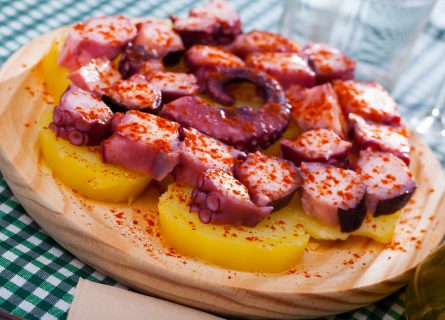
If you love seafood, you’ll adore Galicia. The endless variety of Atlantic and freshwater fish is staggering, as is the sophisticated – and yet traditional – culinary art practiced by the region’s myriad of talented chefs. There are numerous excellent restaurants in every Galician city and town, although the most exciting options will inevitably be found in the capital, Santiago de Compostela. But to catch the atmosphere of any Spanish city, plunge straight into the tapas scene and follow the winding streets that contain scores of lively bars and bodegas. Hojaldre de salmon y queso (pastry with salmon and cheese) is heaven alongside a chilled glass of Godello.
Galician Gastronomy Guide: Read more

Immerse yourself in Santiago de Compostela's vibrant flavors and uncover hidden culinary gems with our expert insider guides. Plan an unforgettable trip today!
Read moreIf you would like us to customize an exclusive luxury tour, contact us and let us know your travel plans. We offer luxury food and wine tours for private groups of a mininium two guests. In addition, all of our private, chauffeured tours are available year-round upon request.

